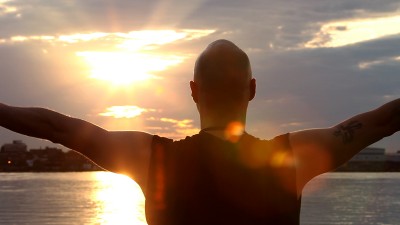
I have an ambiguous relationship with mindfulness. It is recommended for so many purposes and I have myself taught Anthony De Mello’s version of mindfulness exercises but I have never got far with it as a personal practice. I didn’t when it was offered me as a way of preparing for prayer (I always found I got on better just diving in or entering via Ignatian imagination) and now that my attention span is diminished by disease I find it even less inviting. Yet I do find myself wondering if I am missing something. Friends give me testimonials about how it helps their chronic pain for example. It seems it ought to be ideally suited to coping with what I have called the ‘adrenaline poisoning’ that makes living with ME disturbing.
Anyway… this morning I came across a post from Toni Bernhard, ‘7 Myths about Mindfulness‘.
Mindfulness is in the headlines. Time recently devoted a cover story to the subject. The essence of mindfulness is paying careful attention to your present experience, whether it be a sight, a sound, a taste, a smell, a sensation in the body, or mental activity (such as an emotion or thought).
It is well worth a read and makes me want to give mindfulness some more thought and maybe even some more practice.
Toni, who also suffers from ME, wrote the book on the subject, ‘How to be Sick: A Buddhist-Inspired Guide for the Chronically Ill and Their Caregivers‘! I can highly recommend it even if I feel as ambivalent about it as I do about mindfulness. My ex-therapist thought it was the best thing since sliced bread but it got my theological hackles raised over the understanding of suffering.
‘Contemplative attitude’ on the other hand is something that I cherish and encourage — and it feels both like and unlike mindfulness. What is it? I learned it first in the context of spiritual direction. It is the focused, unmanipulative, attentive, open, listening to a person’s experience — or from the inside, my own attention to my experience. It is wanting to see what is really there, wanting to let the experience be on its own terms long enough for it to unfold and develop, wanting not to close it down prematurely by judging it or theorising about it. Walter Burghardt, SJ calls it ‘a long loving look at the real’. Perhaps the biggest difference from a mindful attitude is the expectation that the real looks back at me — that ordinary experience paid attention to contemplatively can be a place of encounter.
My favourite paragraph in the Spiritual Exercises of Ignatius Loyola is [75]:
A step or two in front of the place where I am to contemplate or meditate, I will stand for the length of an Our Father, raising my mind above and considering how God our Lord is looking at me, etc., and make an act of reverence or humility.…
This is how Ignatius recommends we begin every spiritual exercise, with a look at God who is already looking at me. I have written before about how this is the key to Ignatian spirituality. Taken seriously, it means that every act of mindfulness takes place against the background of a God already being mindful of me. And that encompassing mindfulness makes a space where I can allow everything and anything to come to awareness.
Maybe that is my beef with mindfulness… it seems to me a lonely technique, an individual practice to manage my mind or brain, when what I am expecting from contemplative awareness is a dialogue, a relationship, an encounter.